Word 2010 -
Line and Paragraph Spacing

Word 2010
Line and Paragraph Spacing


/en/word2010/using-indents-and-tabs/content/
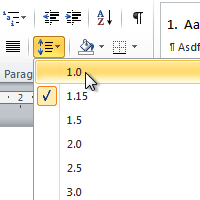
An important part of creating effective documents lies in the document design. When designing your document and making formatting decisions, you will need to know how to modify the spacing. In this lesson, you will learn how to modify the line and paragraph spacing in various ways.
Adjusting the line spacing will affect how easily your document can be read. You can increase spacing to improve readability, or reduce it to fit more text on the page.
Optional: You can download this example for extra practice.
Line spacing can either be measured in lines or points. For example, when text is double spaced, the line spacing is two lines high. On the other hand, you might set 12-point text with something like 15-point spacing, which gives enough height for the text plus a little extra space. You can reduce the line spacing to fit more lines on the page, or you can increase it to improve readability.
Line spacing is also known as leading (pronounced to rhyme with wedding).
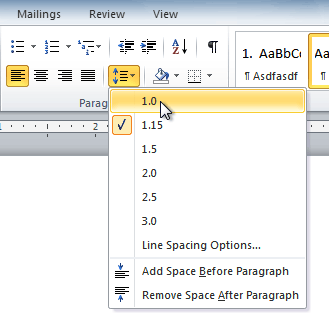 Changing the line spacing
Changing the line spacing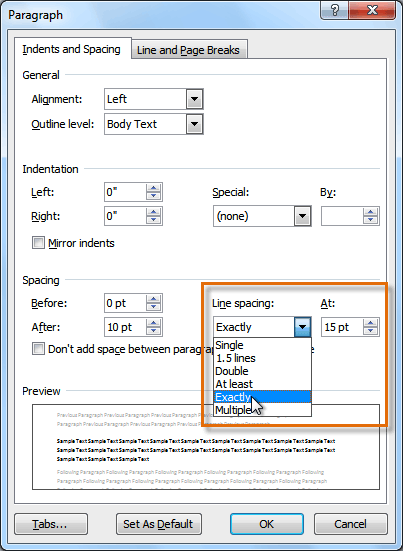 Fine tuning the line spacing
Fine tuning the line spacingIf you select At least or Exactly in the Paragraph dialog box, the line spacing will be measured in points. Otherwise, it will be measured in lines.
Just as you can format spacing between lines in your document, you can choose spacing options between each paragraph. Typically, extra spaces are added between paragraphs, headings, or subheadings. Extra spacing between paragraphs can make a document easier to read.
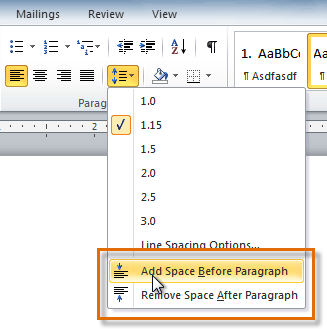 Adding space before a paragraph
Adding space before a paragraph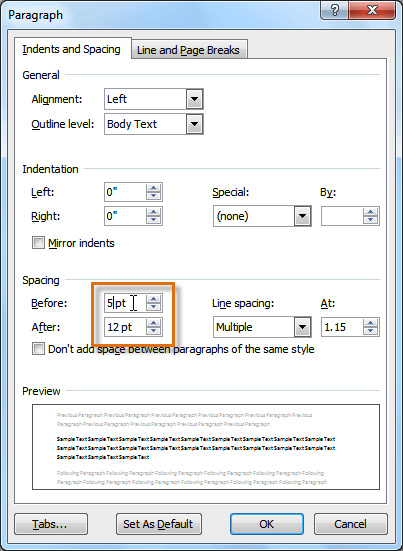 Fine tuning the paragraph spacing
Fine tuning the paragraph spacingYou can use Word's convenient Set as Default feature to save all of the formatting changes you've made and automatically apply them to new documents. To learn how to do this, read our article on Changing Your Default Settings in Word.
/en/word2010/working-with-lists/content/